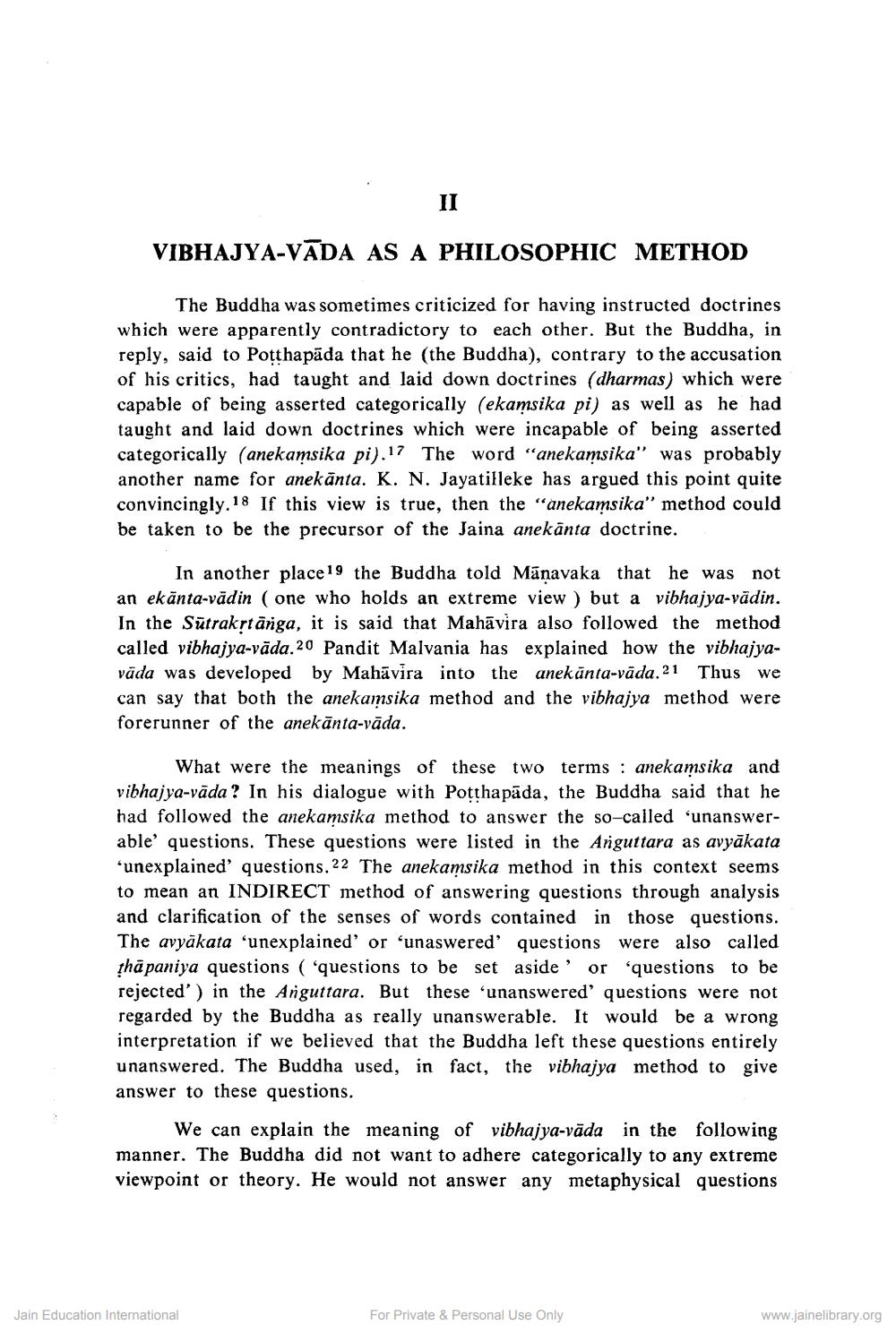________________
11
VIBHAJYA-VĀDA AS A PHILOSOPHIC METHOD
The Buddha was sometimes criticized for having instructed doctrines which were apparently contradictory to each other. But the Buddha, in reply, said to Potthapāda that he (the Buddha), contrary to the accusation of his critics, had taught and laid down doctrines (dharmas) which were capable of being asserted categorically (ekamsika pi) as well as he had taught and laid down doctrines which were incapable of being asserted categorically (anekamsika pi).17 The word "anekamsika" was probably another name for anekānta. K. N. Jayatilleke has argued this point quite convincingly.18 If this view is true, then the "anekamsika" method could be taken to be the precursor of the Jaina anekānta doctrine.
In another place 19 the Buddha told Mānavaka that he was not an ekānta-vādin ( one who holds an extreme view) but a vibhajya-vādin. In the Sūtrakrtānga, it is said that Mahāvira also followed the method called vibhajya-vāda 20 Pandit Malvania has explained how the vibhajyavāda was developed by Mahāvira into the anekünta-vāda.21 Thus we can say that both the anekansika method and the vibhajya method were forerunner of the anekānta-vāda.
What were the meanings of these two terms: anekamsika and vibhajya-vāda? In his dialogue with Potthapāda, the Buddha said that he had followed the anekamsika method to answer the so-called “unanswerable questions. These questions were listed in the Anguttara as avyākata "unexplained' questions. 22 The anekamsika method in this context seems to mean an INDIRECT method of answering questions through analysis and clarification of the senses of words contained in those questions. The avyākata "unexplained' or 'unaswered' questions were also called thā paniya questions ( 'questions to be set aside' or 'questions to be rejected') in the Anguttara. But these “unanswered' questions were not regarded by the Buddha as really unanswerable. It would be a wrong interpretation if we believed that the Buddha left these questions entirely unanswered. The Buddha used, in fact, the vibhajya method to give answer to these questions.
We can explain the meaning of vibhajya-vāda in the following manner. The Buddha did not want to adhere categorically to any extreme viewpoint or theory. He would not answer any metaphysical questions
Jain Education International
For Private & Personal Use Only
www.jainelibrary.org




